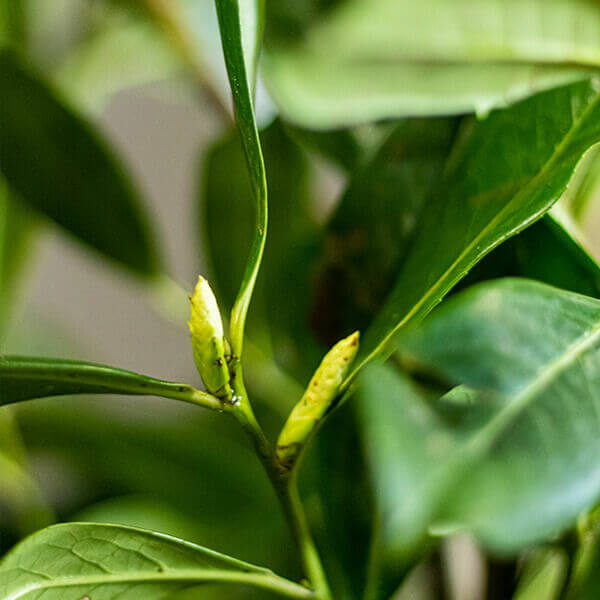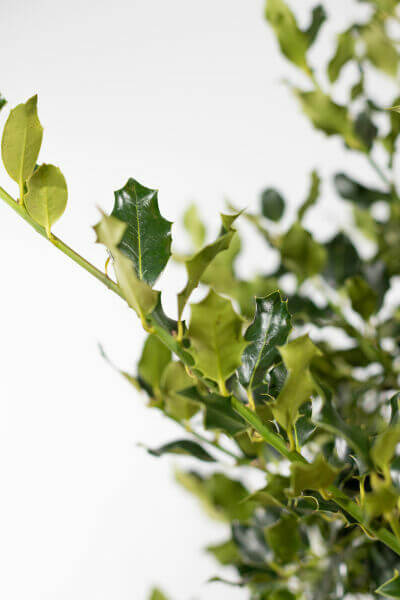Best Hedging Plants For Creating Enclosures
Enhance your garden's allure with lush hedge ranges such as Yew (Taxus), Thuja, Laurel, Photinia, and Bamboo, commemorated for their structural integrity and ecological advantages.
Yew and Thuja provide evergreen coverage and winter durability, while Laurel offers rapid growth and broad, fragrant leaves.
Photinia adds seasonal beauty with its dynamic red foliage, and Bamboo provides a low-maintenance, serene atmosphere.
These hedges improve air quality, lower noise, and produce tranquil, personal areas.
Proper planting, spacing, and upkeep make sure vigorous growth and environmental consistency.
Explore how these lavish varieties can elevate your garden's appeal and wellness.
Key Takeaways
Change Your Garden With Lush Hedge Varieties
- Select Yew for its dense, evergreen development and unparalleled durability.
- Opt for Laurel for its fast growth and broad leaves, guaranteeing quick personal privacy.
- Pick Photinia for its vibrant seasonal foliage, which turns a striking dark red.
- Use Bamboo for a low-maintenance, winter-hardy hedge with visual appeal.
- Area plants 2-3 per meter and prune regularly for optimum growth and health.
Popular Hedge Plants
When transforming a garden with rich hedge varieties, it's important to consider popular hedge plants such as Yew, Thuja, Laurel, and Photinia due to their special characteristics and benefits.
Yew (Taxus) is extremely esteemed for its durability and dense, green development, making it a prime option for enduring landscapes.
Thuja is kept in mind for its evergreen foliage and robust winter season resilience.
Photinia adds seasonal vibrancy with red leaves that darken with time, creating dynamic visual appeal.
Laurel uses quick development and aromatic, broad leaves, suitable for quick privacy.
Additionally, Bamboo is an excellent choice for ambiance, offering a low-maintenance, winter-hardy option that boosts the garden's visual with its elegant, swaying walking canes.
These choices deal with a range of horticultural needs and preferences.
Advantages of Garden Hedges
Garden hedges use a wide variety of benefits, making them a valuable addition to any landscape. These natural barriers are cost-efficient to execute and provide substantial wind security, enhancing air blood circulation and adding to noise decrease. The dense foliage of hedges like Thuja and Beech ensures personal privacy by obstructing presence, producing a serene and remote environment.
Hedges also play a crucial function in microclimate policy, providing a steady environment that fosters plant development and lessens temperature changes. Their intricate leaf structures filter contaminants, improving air quality and adding to a much healthier garden community.
Additionally, hedges master sound reduction, soaking up and deflecting acoustic waves to lower ambient sound levels. This double functionality of supplying both visual and acoustic personal privacy enhances the general tranquility and aesthetic appeal of any garden.
Planting and Upkeep Tips
For an effective hedge, meticulous preparation of the planting location is crucial. Guarantee the soil has correct pH and drain to support strong root development.
Area the plants properly for the chosen species. Water the hedge often throughout its preliminary development phase, adjusting as needed with seasonal modifications.
Carry out a systematic pest control and illness avoidance method, using organic or chemical treatments when essential. Regularly inspect for aphids, mites, and fungal infections.
Apply mulch to keep wetness and reduce weeds. Seasonal pruning promotes thick development and air blood circulation, important for plant health.
Following these guidelines will help you cultivate a dynamic, properly maintained hedge that boosts the appeal of your garden.
Spacing and Trimming Guidelines
Spacing and Trimming Guidelines
Proper spacing and trimming are crucial for cultivating healthy, visually appealing hedges. Sufficient spacing guarantees each plant receives adequate nutrients, light, and air flow.
Follow these standards for ideal hedge upkeep:
- Spacing: Position hedge plants 2-3 plants per meter to encourage robust growth.
- Pruning Methods: Regular pruning is important for preserving desired hedge height and shape. Trim new growth in summer and cut back older wood throughout winter season.
- Seasonal Care: Change trimming methods and schedules according to seasonal requirements to ensure plant health.
- Hedge Height: Regularly display and cut to preserve the desired hedge height and attain uniform visual appeals.
Abiding by these actions will ensure your hedge thrives, boosting both the appeal and performance of your garden.
Selecting the Right Hedge
Choosing the Right Hedge
Picking the suitable hedge involves examining elements such as mature height, foliage density, and ecological durability. Successful hedge plant choice requires comprehending each species' growth attributes and site-specific versatility.
For instance, Yew (Taxus) provides excellent durability and dense development, while Thuja is notable for its winter season resilience. In addition, considering upkeep requirements is essential; fast-growing types like Laurel or Privet demand routine trimming, whereas low-maintenance alternatives like Bamboo or Ivy might be more effective for those seeking very little maintenance.
Environmental elements such as soil type, light availability, and moisture conditions should likewise guide the selection procedure. This careful method makes sure the selected hedges will grow, providing both visual and practical advantages to the garden landscape.
Delivery and Planting Recommendations
To guarantee your hedge plants flourish, they must be provided by specialized couriers and planted quickly upon arrival.
Follow these necessary steps for successful planting:
- Soil Preparation: Enhance the soil with natural matter to enhance drainage and nutrient content.
- Planting Depth: Produce a trench two times the width and equivalent to the depth of the root ball.
- Watering Strategies: Water thoroughly after planting, keeping the soil consistently damp but not filled.
- Mulching: Use a layer of mulch to maintain moisture and suppress weeds.
Customer Support and Service
Provided the essential function of timely support in horticultural pursuits, our consumer support team is readily available six days a week through telephone, e-mail, and social networks to offer professional advice and quickly deal with any issues. Their dedication to fast action times makes sure customer complete satisfaction by dealing with inquiries connected to plant health, optimum planting approaches, and upkeep schedules.

Within 24 hours
This extensive support group, enhanced by an excellent 9.3/ 10 customer rating, highlights our commitment to enhancing the gardening experience for each client.
Regularly Asked Questions
How Long Does It Take for Hedge Plants to Develop?
Hedge plants normally need one to 3 years to end up being totally developed, with the exact duration varying by types and growing conditions.
Reliable care throughout this important duration is vital for robust development. Constant watering, watchful weed control, and suitable fertilizer application are critical in promoting strong root development.
For example, fast-growing types like Laurel might develop quicker, while slower-growing varieties such as Yew may take longer. Persistent maintenance accelerates the establishment procedure, leading to healthy and thick hedges.
What Are the Finest Hedge Plants for Personal Privacy?
The question of the best hedge plants for privacy includes assessing evergreen and deciduous choices.
Evergreen hedges like Thuja, Laurel, and Cypress provide year-round protection, making sure continuous privacy.
In read more contrast, deciduous hedges such as Beech offer seasonal personal privacy, shedding leaves in cooler months.
Key maintenance suggestions for privacy hedges include routine cutting, fertilizing in spring, and correct spacing-- usually 2 to 3 plants per meter.
Furthermore, consistent watering and thorough weed elimination are important for promoting healthy, dense development.
Can Hedge Plants Bring In Wildlife to My Garden?
Yes, hedge plants can draw in wildlife to your garden by providing necessary advantages like shelter, food, and nesting sites, therefore improving local biodiversity. Yew, holly, and laurel are excellent for drawing in birds, while ivy supports a variety of pests.
However, it is necessary to keep in mind that there are some drawbacks, such as increased upkeep to manage bugs and regular upkeep. Thoroughly selecting and preserving hedge varieties can help stabilize these downsides and benefits, ultimately cultivating a vibrant and sustainable ecosystem in your garden.
Are There Any Blooming Hedge Plants Available?
Yes, there are flowering hedge plants readily available that can enhance the charm of your garden.
For instance, Elaeagnus, also known as Olive Willow, produces aromatic white flowers in the fall, including a touch of elegance.
Photinia, another popular choice, showcases dynamic red leaves that grow into a rich green, creating a vibrant visual result throughout the seasons.
To make sure these plants thrive, it's vital to practice correct pruning strategies and seasonal maintenance, such as trimming new growth in the summertime and cutting down in the winter.
These procedures will assist keep the health and aesthetic appeal of your flowering hedges.
How Do I Prevent Pests in My Hedge Plants?
To prevent pests in hedge plants, employ natural pest control techniques and preserve appropriate hedge care. Present beneficial insects like ladybugs, which prey on harmful pests, to create a balanced environment.
Frequently check your hedges for indications of problem and promptly eliminate any afflicted parts to prevent the spread. Guarantee the health of your hedges by applying balanced fertilizers and providing adequate water.
Make use of mulching to retain soil wetness and appropriate spacing to decrease plant stress and promote robust growth. These practices jointly assist in lessening insect issues and maintaining a healthy hedge.
Conclusion
In essence, choosing the ideal hedge ranges such as Yew, Thuja, and Laurel can change any garden into a peaceful haven. These plants provide year-round plant, improve aesthetic appeal, and deal practical advantages like sound reduction and wind protection.
Correct planting methods, accurate spacing, constant watering, and seasonal trimming are vital for optimum growth.
Reputable delivery services and skilled client assistance guarantee a seamless experience from purchase to planting, making it easier than ever to elevate your outdoor area.
Garden hedges use a plethora of advantages, making them an important addition to any landscape. These natural barriers are cost-efficient to execute and provide substantial wind protection, boosting air circulation and contributing to sound reduction. The thick foliage of hedges like Thuja and Beech makes sure privacy by blocking visibility, developing a remote and serene environment.

Pruning Techniques: Routine pruning is vital for preserving desired hedge height and shape. Cut new growth in summer season and cut back older wood during winter.